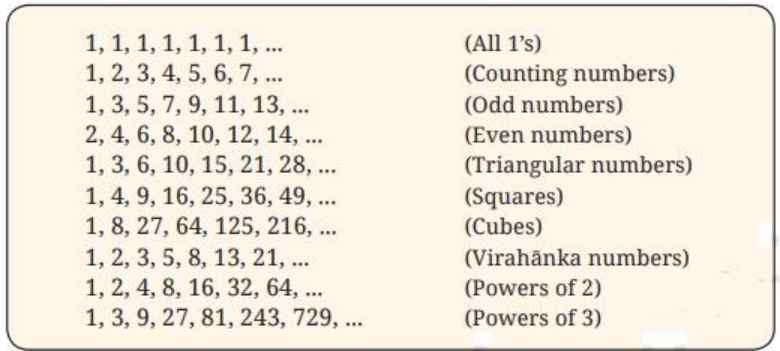Class 6 Maths Chapter 1 Questions and Answers - Free PDF Download
FAQs on NCERT Solutions For Class 6 Maths Chapter 1 Patterns In Mathematics Exercise 1.2 - 2025-26
1. What is Exercise 1.2 in Chapter 1 about?
Exercise 1.2 focuses on "Patterns in Numbers," where students learn to identify and work with different numerical patterns. It includes tasks to help recognize sequences and understand how numbers change.
2. How can I use the NCERT Solutions for Exercise 1.2 effectively?
Use NCERT Solutions to practise spotting patterns and solving related problems. Follow the simple steps provided to understand each type of pattern and apply similar methods to new problems.
3. What types of patterns are covered in Exercise 1.2?
Exercise 1.2 covers different numerical patterns, including repeating patterns, counting numbers, odd and even numbers, and sequences like triangular and square numbers.
4. Why are patterns important in mathematics?
Patterns help in seeing regularities and relationships between numbers. Understanding patterns is essential for learning more advanced maths concepts and solving problems more easily.
5. Can NCERT Solutions help if I struggle with patterns?
Yes, the NCERT Solutions offer clear explanations and step-by-step answers that can help you understand patterns better. Practicing these solutions can make it easier to recognize and use patterns.
6. How do I approach solving problems in Exercise 1.2?
Start by figuring out the type of pattern in each problem. Use the examples in the solutions to guide you, and apply the same approach to solve similar problems in the exercise.
7. Are the NCERT Solutions for Exercise 1.2 available for FREE?
Yes, the NCERT Solutions for Exercise 1.2 are available as a FREE PDF download from Vedantu. You can access them anytime to practise and review.
8. How can patterns in numbers help in future maths topics?
Understanding patterns provides a foundation for more advanced topics. It helps with learning sequences, series, and algebraic concepts, making future maths topics easier to understand.
9. What should I do if I can't solve a problem from Exercise 1.2?
Review the NCERT Solutions to see the step-by-step approach used. If you're still stuck, try practising similar problems or ask for help from a teacher or classmate.
10. How often should I practise Exercise 1.2 problems?
Regular practice is important. Try to solve a few problems from Exercise 1.2 each day to get comfortable with different patterns and improve your skills.
11. Can I use the NCERT Solutions for Exercise 1.2 for revision?
Yes, the NCERT Solutions are great for revision. You can review the solutions to refresh your understanding of patterns and prepare for tests or exams.
12. Are there any tips for learning patterns effectively?
Focus on understanding how each pattern works. Practise regularly and use NCERT Solutions to see how different patterns are solved. This will help you recognise and apply patterns more easily.
13. How do patterns in numbers relate to real-life situations?
Patterns can be found in everyday life, such as in schedules, designs, and sequences. Learning about patterns in numbers helps in understanding these real-life patterns and solving practical problems.




















